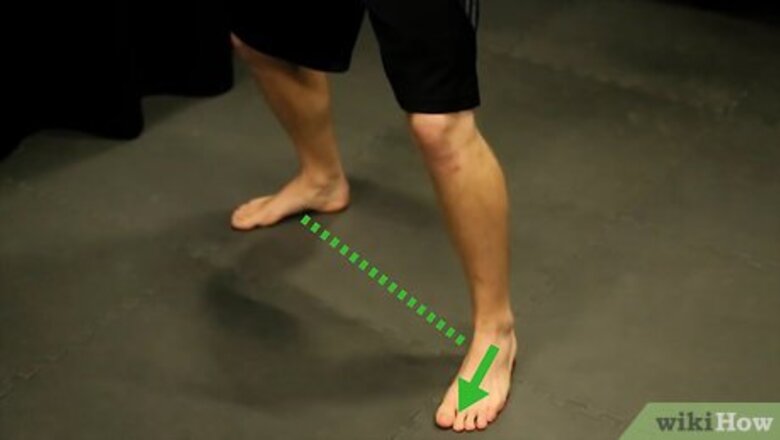
views
Positioning your Body
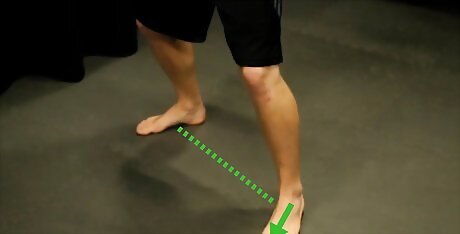
Position your feet properly. Think of your feet as the roots that keep your body in place. If you have a solid, well-balanced stance, you will be much harder to knock over. First, extend your non-dominant foot towards your opponent. Rotate your leg slightly towards your body so that your toes and knee point just to the side of your opponent. Extend your dominant foot behind you, about a shoulders-width apart from your dominant foot. Rotate your dominant leg so that your toes and knee are pointing away from your opponent. Your dominant leg shouldn’t be at a right angle to your dominant foot. Turn your leg in towards your body slightly if you find yourself doing this. Stay on the balls of your feet. If you stand flatfooted you might be slower than your opponent.
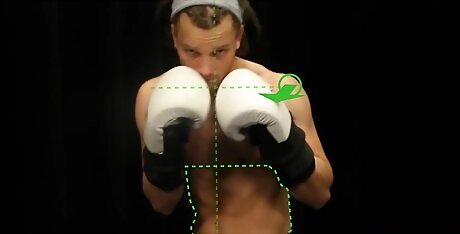
Position your torso correctly. Your feet are pointing to the side of your opponent; therefore, you will have to twist your shoulders slightly to face them. Keeping your body positioned at this angle gives your opponents a much smaller target to hit. Make sure to keep your stomach muscles tight and your back straight. Otherwise, you may be overbalanced easily. Once you’re in position, bend your knees slightly and rock your weight back and forth to test your balance. Keeping your stomach muscles clenched improves your balance but it also protects your stomach if you get hit. Getting hit in a relaxed stomach is painful!
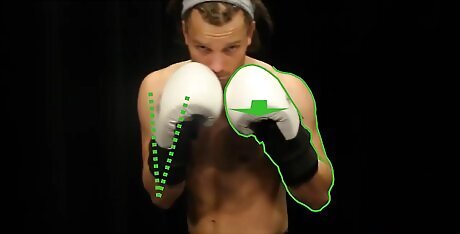
Position your arms for defense. The placement of your arms is extremely important. They are your first line of defense and protect your face and body from attacks. Curl your hands into loose fists and raise them in front of your face. Your dominant arm should be close to your body while your non-dominant arm should be slightly in front of your body. Extend your non-dominant arm forward but not so far forward that you exhaust your shoulder. Keep your elbows close to your body, but not so close that they touch your sides. In fact, if you flare out your elbows just an inch or two this will discourage your opponent from kicking.

Position your head defensively. Keep your chin down and your mouth closed. By keeping your chin down you make the delicate bones around your eyes and nose a harder target to hit. Similarly, a hard punch to an open mouth can lead to severe jaw and teeth injuries. Therefore, keep your mouth closed even if your opponent is yelling insults at you. Make sure your fists are hovering near your face to protect yourself from attacks. Staying quiet in the face of insults has an added benefit. Confident people don’t feel the need to jeer at their opponents so staying quiet will make you appear more confident. This may spook your opponent and end the fight.
Defending Yourself
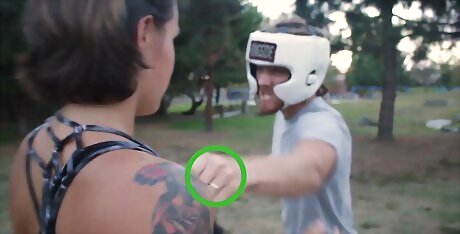
Identify a potential attacker. A person who is considering violence will usually grit their teeth and clench their fists. If they have any training, they may move a foot forward or turn their body to the side. They may also drop their chin as this is a natural reaction to protect one’s throat. Keep your guard up and be wary of warning signs. If you notice any of these signs, be ready to position yourself in a fighting stance. Always try to diffuse a bad situation with words before resorting to violence. Similarly, never initiate the fight; you should only engage in violence when you’re defending yourself or someone else. If you’ve practiced getting into a fighting stance you will find it easy to do when you’re in a stressful situation. Practice as often as you can!
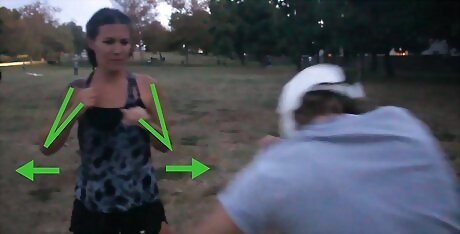
Keep moving. Stay up on the balls of your feet and move back-and-forth and side-to-side. By moving around, you'll be able to stay alert and ready to fight. Keep your arms stiff and your knees slightly bent as you move around. Move randomly. If you move with rhythm your opponent can time their attacks to your movements. Make sure you're not moving around too much, as that can tire you out. Your movements should only be a few inches at a time.
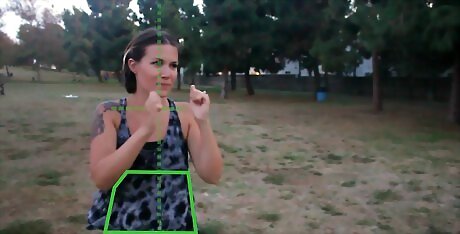
Maintain your confidence. Stay balanced, keep your stomach tight, and look your opponent in the eye. Make sure your back is straight and your shoulders are back. This pose suggests self-awareness and confidence. If your opponent thinks you’re unafraid, they may back down. Even if they don’t, your attitude will shake their own confidence and cause them to make mistakes when fighting. If someone tries to leave a fight, let them. However, don’t turn your back on a defeated opponent as they may choose to attack when you’re not looking.
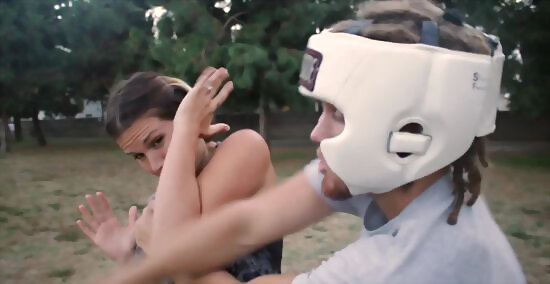
Defend yourself from attacks. Block your opponent’s punches using your hands. Keep your arms in the fighting position and loosely cup your hands at eye-level. When your opponent strikes out, quickly hit his arm away with one of your cupped hands. This action will unbalance your opponent and use their own strength against them. If you’re stance is well balanced, you won’t need a large amount of strength to do this. If someone lands a punch on your head try to move towards the punch and clench your jaw. Make your forehead the biggest target. Your forehead is a very hard surface and your attacker may injure their hand. If someone lands a punch on your body make sure to tighten your stomach muscles. Move your body so that the punch lands on your sides instead of your stomach.
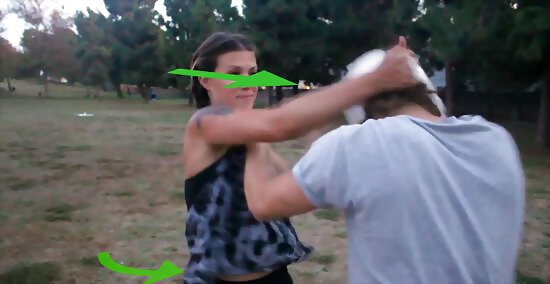
Throw punches properly. Extend your arm in front of your body. Make sure your wrist is straight and your thumb is on the outside of your fist. If not, you may injure your wrist or break your thumb. While extending your arm, twist your body into the punch. When you punch with your non-dominant arm you will pivot with your non-dominant leg, and vice versa. Aim for a spot just beyond the place you’re trying to hit to ensure that you give the punch the maximum force. If you don’t use your whole body to punch, your hit won’t have very much force. Make sure your shoulders are moving into the punch with the rest of your body.
Perfecting your Form
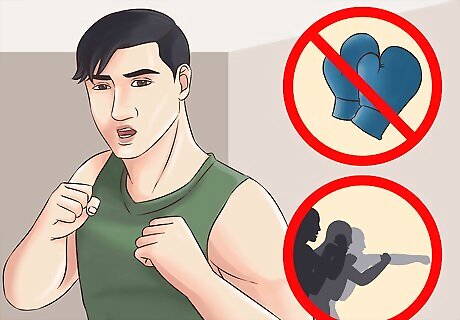
Practice shadowboxing. Shadowboxing is a term for practicing without an opponent. This exercise can increase your speed and improve your form. To shadowbox properly, imagine your opponent standing in front of you. Next, imagine the different types of attacks they may use on you. React to these attacks with the same speed and force you would use on a real opponent. Begin your workout from a fighting stance. Everything you do needs to start from that position. Once you get good at shadowboxing increase your workout by shadowboxing while holding weights. This will improve your arm strength and speed.
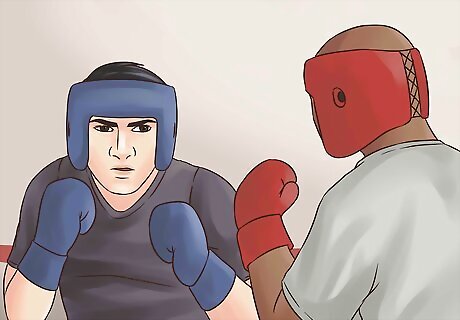
Watch good fighters fight. If you have a favorite fighter watch their movements during their fights. Take notes on what they do and try to mirror your actions to theirs. Record the fights so you can watch them over and over. After a few viewings, stand up while you watch and try to mimic their movements as they move. Make sure you’re watching the right kind of martial arts tournament for your goals. For example, wrestling is a great form of fighting but isn’t necessarily helpful for beginners trying to learn self-defense. Pay attention to the different fighting stances that professional fighters use. If you notice something useful, incorporate it into your own fighting stance.
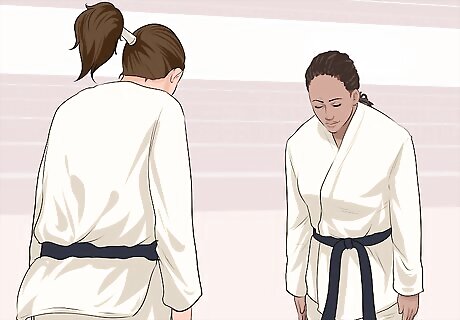
Join a self-defense gym. There are many kinds of self-defense classes that you can take. For example, you could take a martial arts class such as Karate or Taekwondo. All martial art forms have different fighting stances. For example, the most popular Taekwondo fighting stance involves holding your open hands in front of your face to protect your head. However, all of these fighting stances have something in common: positioning your feet slightly apart and centering your body for strength and balance. If you’re not interested in the strict tenants of a martial arts class consider taking a less structured course such as kickboxing or boxing. These courses are great ways to learn powerful self-defense techniques quickly.



















Comments
0 comment